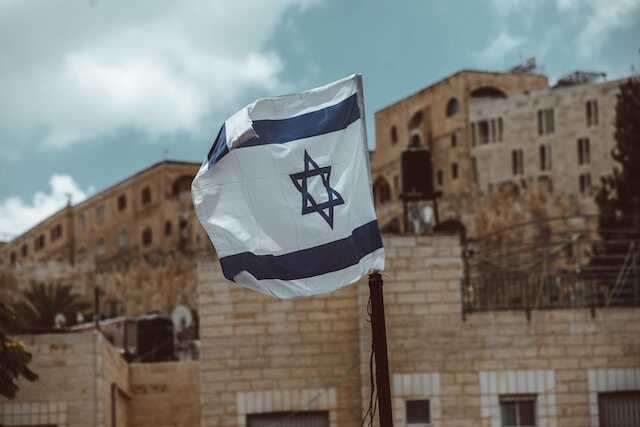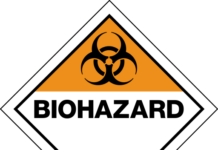
On Saturday, preparations were underway in Israel for a potential ground incursion into the Gaza Strip, governed by Hamas. This came following directives to the region’s residents to relocate southwards, facing a sealed Egyptian border.
Simultaneously, Israel’s top security official cautioned the Lebanon-based faction, Hezbollah, against opening another conflict theater, implying severe consequences for Lebanon should they engage.
The Israeli administration has expressed its determination to dismantle Hamas, following an unprecedented assault a week prior, where Hamas militants infiltrated Israeli communities, resulting in civilian casualties and numerous abductions. This incident marked a dark chapter in the nation’s civilian-targeted attacks.
The aftermath was harrowing, with around 1,300 fatalities, leaving Israel reeling from the graphic content shared via mobile recordings and first-responder narratives of the brutality within the affected communities.
Israel’s retaliation has been fierce, subjecting Gaza to an unparalleled level of military barrage, effectively besieging the 2.3 million Palestinians residing there.
Local Gazan officials have documented over 2,200 fatalities, including a significant child casualty rate, and close to 10,000 injuries. Rescue teams continue their grim search following nocturnal airstrikes.
In anticipation of an impending ground operation by Israel, a large exodus was observed in Gaza’s northern regions. Concurrently, Israeli forces intensified their aerial offensives, albeit maintaining two escape routes for civilians.
U.S. President Joe Biden, in conversations with Israeli Prime Minister Benjamin Netanyahu, reaffirmed his staunch support while addressing the global effort to maintain humanitarian supplies for the innocent caught in the conflict. This sentiment was also echoed in his dialogue with Palestinian President Mahmoud Abbas, emphasizing the critical need for humanitarian access in Gaza.
Defiantly, Hamas leader Ismail Haniyeh proclaimed an unwavering stance to “remain in our land,” despite reports of a substantial displacement of residents amidst the Israeli bombardment.
The sudden aggression from Hamas on October 7 has thrust the region into a precarious situation, eliciting a robust preparation for a potent Israeli counterstrike.
“Preparations are in full swing within the IDF (Israel Defense Forces) for comprehensive ground operations,” stated the military, suggesting a multifaceted strategy involving air, maritime, and terrestrial forces, although specifics were not provided.
A report from OSINTdefender indicated that a high-ranking Hamas official, Ismail Haniyeh, publicly rejected proposals for Palestinians to vacate Gaza.
Civilians attempting to evacuate northern Gaza face compounded challenges, including a dire water shortage following Israel’s cessation of resource supply, as per an Associated Press release. However, the Israeli forces have purportedly established a corridor for safer passage.
In a related report, the Israeli government has disclosed plans for a synchronized military campaign encompassing air, sea, and land components, focusing on a substantial ground operation.
During a visit to the border, an armored Prime Minister Benjamin Netanyahu engaged with military personnel, suggesting an impending escalation. Subsequently, he convened with members of his emergency cabinet for security deliberations.
Israel’s retaliatory measures continue unabated after the initial surprise offensive by Islamist militants, which breached the robust border defenses, resulting in over 1,300 deaths.
In a recent development, the northern populace of the Gaza Strip, including inhabitants of the largest settlement, Gaza City, received directives from the Israeli military to evacuate southwards. Assurance was provided for the safety of evacuees utilizing two primary routes until a specified deadline. Post-deadline, there was a noticeable military build-up around Gaza.
Hamas has advised residents against evacuation, citing dangers en route. They allege fatalities from recent strikes targeting vehicles transporting evacuees, although these claims haven’t been independently confirmed. Contrarily, Israel accuses Hamas of exploiting civilians as human shields, an allegation Hamas refutes.
In a specific district in Gaza City that received an evacuation order, several residences were hit by overnight aerial bombardments.
A local father, speaking anonymously from a hospital, described the night’s terror. He expressed his resolve to stay, despite fearing for his family’s safety.
The Palestinian Red Crescent acknowledged receiving an evacuation order for the hospital by a set deadline but refused compliance due to their commitment to aiding the ill and injured.
‘FOCUS ON THE CAPTIVES’
The nation, grieving and united following the attacks, has seen a massive mobilization of reservists.
A local farmer from Kibbutz Kfar Aza, Avichai Brodetz, whose family was abducted, established a camp outside the military base to draw attention to the captives’ predicament.
Immediate release of women and children captives is a priority, he emphasized to the press.
Overnight, Israeli airstrikes reportedly resulted in the death of nine hostages, including some foreigners, as per claims by Hamas’ military wing. They had previously threatened retaliatory executions for every structure bombed without prior notice.
Nonetheless, Israel’s aggressive stance hasn’t deterred continued missile attacks from Hamas into deep Israeli territory.
The sole exit from Gaza, not under Israeli control, is the Rafah checkpoint with Egypt. Despite official claims of it being operational, actual movement has stalled due to the ongoing hostilities. Reinforcements on the Egyptian side suggest a reluctance to accommodate a large refugee influx.
An American official stated the U.S. is negotiating to open the crossing for evacuations, specifically aiding Palestinian-Americans desiring exit. Subsequent advisories were issued to American nationals to approach the crossing.
Updated figures indicate a rise in American casualties, with several still missing.
Despite international aid reaching Egypt, logistical challenges persist for entry into Gaza, with Israel maintaining strict control over access. The evacuation directive from Israel, deemed a protective measure during the military operation against Hamas, faces criticism from the United Nations for the potential humanitarian crisis it could spur.
TENSION ON THE NORTHERN FRONT
The strife in Gaza coincides with heightened tensions along the Israeli-Lebanese border, unseen since 2006, prompting concerns of a broader conflict.
Hezbollah, a militant group in Lebanon and an ally of Iran, like Hamas, confirmed targeting several Israeli outposts in the contested Shebaa Farms area with precision missiles and mortars.
Amid reports of cross-border shelling and possible infiltrations, villages near the border were put on high alert.
Tzachi Hanegbi, a security advisor to Netanyahu, underscored Israel’s reluctance for war on multiple fronts and cautioned Hezbollah against involvement.
Expressing this, he ominously hinted at the severe repercussions for Lebanon in the event of another conflict, referencing Israel’s longstanding threat of significant retaliation to neutralize Hezbollah’s missile capabilities.
In line with this, the U.S. administration is keen on preventing Iranian or Iran-affiliated factions, including Hezbollah, from joining the hostilities. This stance was reiterated by President Biden, warning against any attempts to broaden the conflict.










